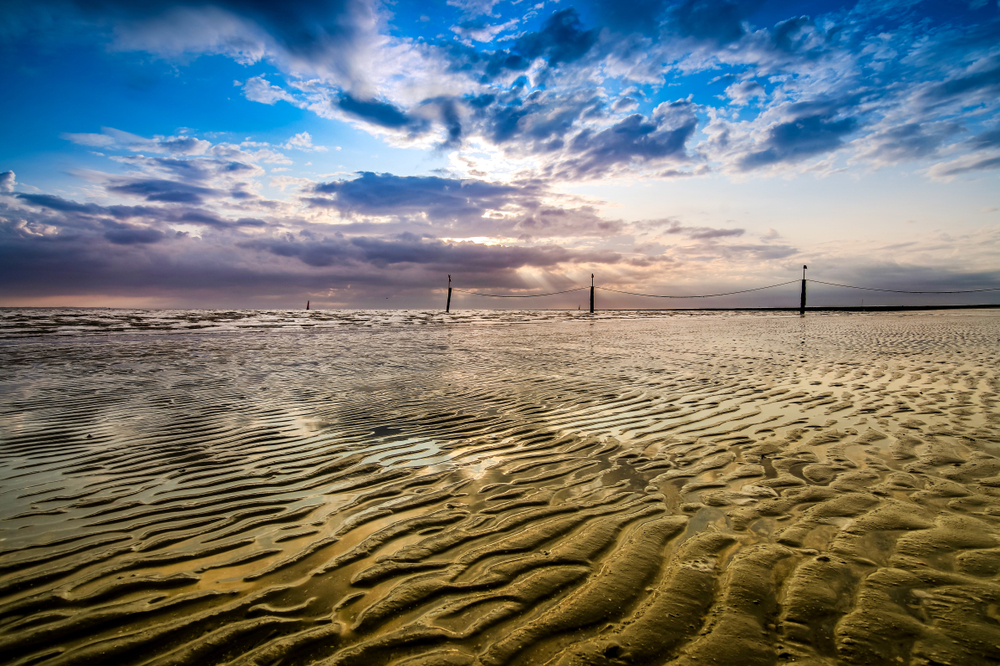Lower Saxony, Germany’s second-largest state in terms of area, impresses with its diversity. Between the peaks of the Harz Mountains and the coasts of East Frisia, both those who are active in sports and those interested in culture will find a suitable environment. The charming landscape between the Elbe, Ems and Leine offers all leisure opportunities. In addition, there are numerous other sights: From the picturesque half-timbered town to the modern “Autostadt”, each of them is worth a visit.
“At the top” in Lower Saxony: East Frisia and its islands
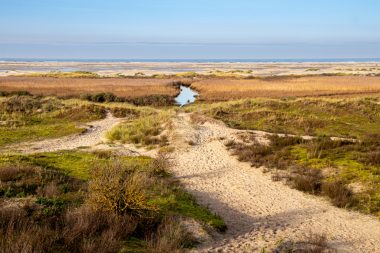
Wide white beaches and always a fresh breeze characterize the seven islands of East Frisia. Borkum, Baltrum, Juist, Norderney, Wangerooge, Spiekeroog and Langeoog lie lined up like pearls off the coast of the mainland. Not only allergy sufferers appreciate the clear, pollen-free air and the wind that blows around their noses. Guided hikes are the best way to explore the unique, strictly protected flora and fauna of the Wadden Sea UNESCO World Heritage Site. Families in particular experience special holiday moments here. The “Land behind the dike” captivates visitors with its maritime flair. Picturesque fishing villages and port towns such as Emden or Cuxhaven convey a touch of seafaring romance.
The region has a lot in store for connoisseurs. Fans of fresh fish will get their money’s worth. If you spend your holidays here, you should not miss out on participating in the famous “tea ceremony”. This epitome of East Frisian cosiness and hospitality has been on the UNESCO list of intangible cultural assets since 2016. The northernmost region of Lower Saxony is not only an attractive holiday destination in summer.
Dark moors and idyll by the river – the Emsland
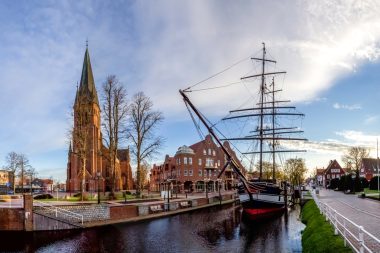
Romantic canals with wooden bascule bridges and numerous replicas of ships – Papenburg presents itself to its guests almost Dutch. In the Meyer Werft shipyard located here, luxurious cruise ships are built that later turn holiday wishes into reality on all the world’s oceans. The adjoining visitor centre provides interesting insights into the construction and construction of future “dream ships”. In addition to this technical highlight, the Emsland stands for intact nature and green expanses. Cyclists choose the right one for them from routes of all levels of difficulty. Quiet waterways and canals invite canoeists. Mysterious moors want to be discovered as well as megalithic graves from the early days of man.
In the cuisine of the Emsland, North German, Westphalian and some Dutch influences are mixed. A typical speciality is “Beschüte”, a kind of rusk in several variations.
Nature worthy of protection and a “blooming” cultural landscape: the Lüneburg Heath
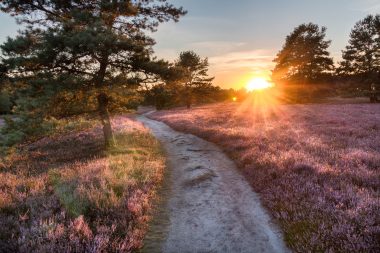
The Lüneburg Heath is one of the oldest of the more than one hundred nature parks in Germany. On an area of over 107,000 hectares, it covers the largest contiguous heath area in Central Europe. Heidschnucken, the native sheep breed, help as animal “landscape gardeners” in the care and preservation of the area. From the beginning of August until September, the small purple flowers of the heather dominate the picture and make a stay an unforgettable experience. Locals and their guests enjoy this natural spectacle by bike, on foot or during one of the popular carriage rides.
The region is also worth a visit outside the heather blossom. Amusement parks such as the well-known Heide Park Soltau or the colourful Weltvogelpark Walsrode await young and old visitors. The historic cities of Lüneburg or Celle invite you to take an enjoyable stroll with their picturesque alleys, shops and cafés. Heidschnuckenbraten or buckwheat dishes and other culinary specialties are not to be missed. As a souvenir, for example, the delicious heather honey at the breakfast table at home reminds you of the relaxing days.
Of dancing witches and the “roof of northern Germany” – the magical Harz Mountains
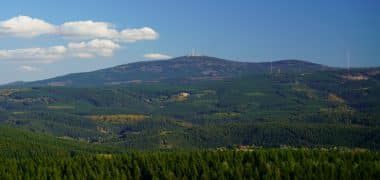
With its mountainous landscape, the Harz National Park is a paradise for hikers . Deep forests, clear streams and rugged rocks are home to rare animal and plant species. The Brocken, the highest mountain in northern Germany at 1,141 metres, is surrounded by countless myths and legends. The famous “Dance of the Witches” on Walpurgis Night is just one of them. Due to its exposed location, its summit is rough and windy at any time of the year. This climatic peculiarity allows plants to grow there that are otherwise only found in Scandinavia. The Brocken can be hiked or “experienced” by mountain bike.
However, many visitors appreciate the popular and comfortable Brocken cable car for the ascent. The Bad Harzburg treetop walk opens up a whole new forest perspective. Under no circumstances should a visit to the thousand-year-old town of Goslar be missed during a holiday in the Harz Mountains. Rich history and culture make the imperial city a sight for all ages. The old core with its more than 1,500 half-timbered houses has been designated a UNESCO World Heritage Site. Those interested in history and technology like to visit the Rammelsberg ore mine here. There you will get a deep insight into the mining history of the region. Enjoyment is not neglected in the Harz Mountains. The palette ranges from the “Harzer Roller”, a sour milk cheese, to hearty sausage specialities and the famous “Schierker Feuerstein”, a spicy herbal liqueur made according to a secret recipe.
Two economic centres: Wolfsburg and Hanover
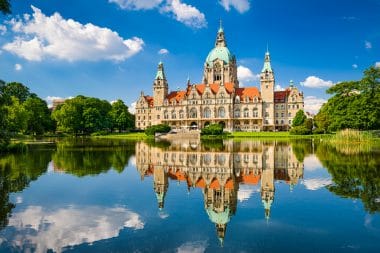
The capital of Lower Saxony, Hanover , gained international fame above all as a trade fair city and today has the largest exhibition grounds in the world. Around 60 events of national importance take place here every year, including the Hannover Messe. In recent years, the city on the Leine has gained a tourist profile. Its parks, cultural events and museums make it an up-and-coming destination. Extensive green and open spaces create a relaxed atmosphere.
A worthwhile destination is the Steinhuder Meer, the largest lake in Lower Saxony. This body of water is located about 30 kilometers northwest of the city and offers a lot of recreation for water sports enthusiasts and cyclists.
Since 2000, Lower Saxony has had a special kind of amusement park in the form of the “Autostadt” Wolfsburg. Between the city centre and the Volkswagen plant, there is a 28-hectare site on the Mittelland Canal, which also functions as a showroom, collection centre for new cars and event arena. There is a luxury hotel, over a dozen restaurants and numerous events throughout the year. A tour of this area is not only an experience for buyers of new cars.
Lower Saxony – travel destination at any time of the year
Lower Saxony as a travel destination thrives on its contrasts and diversity. Relaxing beach holidays in East Frisia, cycling in the Lüneburg Heath and hiking tours in the Harz Mountains leave no room for boredom. Various amusement parks and museums want to be discovered, especially on rainy days. The cities worth seeing contribute a considerable part to the attractiveness of the region. From maritime Wilhelmshaven to the “fairytale-like” Pied Piper town of Hamelin to the venerable university town of Göttingen, each has its own magic. As varied as the landscape and places, the culture and cuisine in this state between the far north and the center of Germany are


